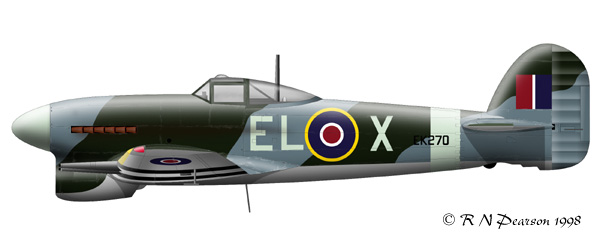
![]()
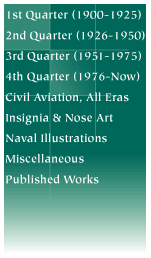
Painting Up a Storm:
Marking Practices of the Hawker Typhoon Part 1
By Bob Pearson
In the Summer of 1941, a new fighter appeared in the inventory of the RAF. This was the Hawker Typhoon. Originally designed as an interceptor and armed with 12 .303 Browning machine guns, the Typhoon was to gain fame as a ground attack aircraft armed with four 20mm cannon and various bombs and rockets. First came a long gestation period in which it was almost removed from service due to problems with its temperamental powerplant - the equally new and untried Napier Sabre. Although promising excellent power, the Sabre was still in its embryonic stage and coupling it with the Typhoon was almost the undoing of both.
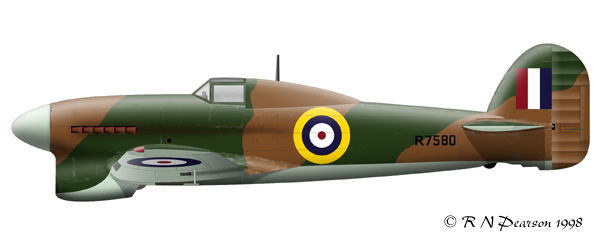
Hawker Typhoon Mk.I R5780
RAF Duxford
September 1941
The first Typhoons to enter service were sent to No.56 Sqn at Duxford. These were finished in the standard Dark Earth/Dark Green/Sky. Also note the original canopy design which offered no rear vision.
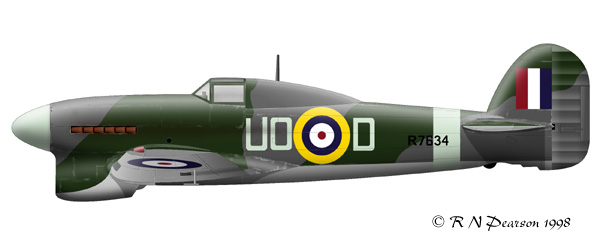
Hawker Typhoon Mk.IA R7634
No.26(Rhodesian)Sqn RAF
February-March 1942
The first change to the markings of the Typhoon was the replacing of the dark earth with Ocean Gray and the underside with Medium Sea Gray. Also added at this time was the Sky fuselage band.
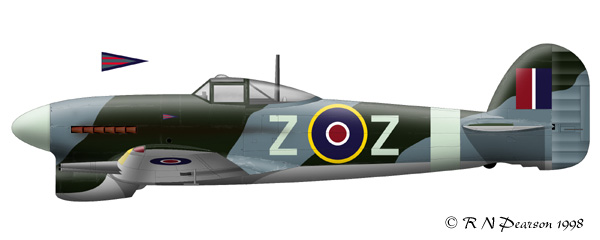
Hawker Typhoon Mk.IB R7698
W/Cdr Denys Gillam
No.266 (Rhodesian)Sqn RAF
The first outwardly visible change to the Typhoon occurred when the canopy was changed to a clear view rear section instead of the solid fairing - although entry was still through a car-style door. At the same time the armament was upgraded to four 20mm cannon. The Typhoon of W/Cdr Gillam shows these changes. Also note his rank pennant on the fuselage in front of the canopy.
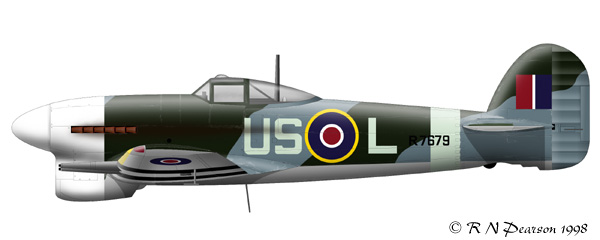
Hawker Typhoon Mk.IB R7679
No.56 Sqn RAF
November 1942
With its distinctive nose mounted radiator and thick wing, the Hawker Typhoon is instantly recognisable .. or so it seems to our modern eye. However a fleeting glimpse of an opposing aircraft is often all that is allowed for in combat. And in such a moment the new Hawker fighter was often mistaken for the equally new Focke-Wulf Fw190. Indeed, moments after the first Typhoon victory was claimed, the unfortunate pilot was himself shot down by a pair of Spitfires ... surely something was needed to prevent such from happening again . .
The first solution was the painting of the entire nose, as far back as the wing leading edge, white. Another was to add four one foot wide black stripes, each 24 inches apart, to the bottom of the wing. Although the white nose made them visible, many pilots now felt they were too visible and another solution was needed.
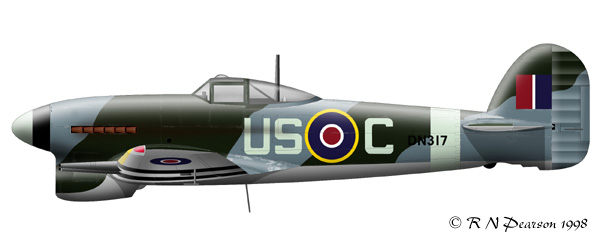
Hawker Typhoon Mk.1B DN317
No.56 Sqn RAF
March 1943
This time the fix was to paint the rear of the spinner in black, leaving the front in Sky. The underwing stripes worked so well that they were ordered adopted in December 1942, with the addition of white between the black stripes. However none were noted in this form until February 1943. One other change was a 12 inch wide yellow stripe on the upperwing behind the innermost cannon from the leading to trailing edge. These were the basic markings that the Typhoon was to carry for the next year.
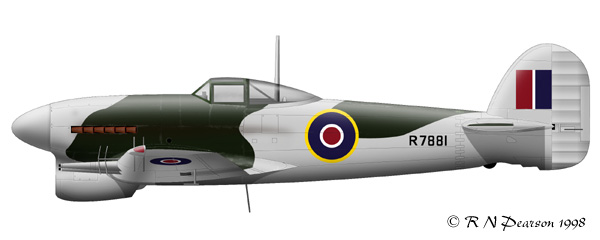
Hawker Typhoon Mk.1B NF R7881
One variant of the Typhoon that was not proceeded with was that of a radar equipped night-fighter. The radar was fitted into the leading edge of a standard Mk.IB. To make room for the associated electronics one fuel tank was removed. This was to be made up for by carrying two 44 gallon drop tanks. R7881 was finished in the standard NF camouflage of Medium sea Gray and Dark Green. At least two operational flights were made in mid-1943, however with the arrival of the Mosquito and Beaufighter, further development was dropped.
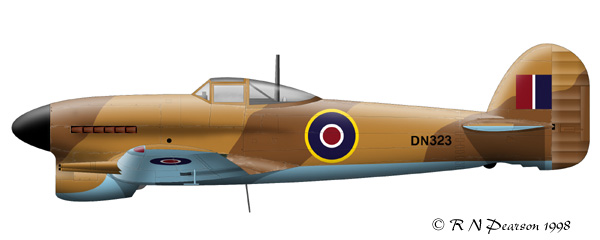
Hawker Typhoon Mk.1B DN 323
No.451 Sqn RAAF
1943
Three Typhoons were sent to the Middle East for trials in mid-1943. All served with No.451 Sqn RAAF. The 19 pilots who flew them were most enthusiastic, but again operational needs elsewhere put an end to this. All three were finished in the usual Sand, Stone and Azure.
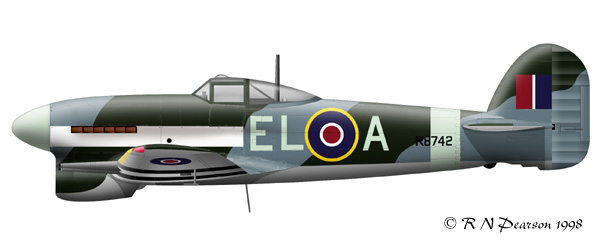
Hawker Typhoon Mk.1B R8742
No.181 Sqn RAF
March 1943
Along with markings carried for various operations (D-Day for example), special markings were also carried for exercises. For 'Exercise Spartan' in March 1943 the enemy forces were represented by aircraft carrying a horizontal white stripe on the nose and the bottom of the port wing was painted black (not shown here).
